Touched upon in this post: 14 Books (Phenomenology of Spirit; “Society Must be Defended”; How to Kill a City; Darkness Now Visible; Why Does He Do That?; Misogyny Re-Loaded; Feminism Seduced; Black Leopard Red Wolf; Berlin Alexanderplatz; The Complete Short Stories of Marcel Proust; something bright, then holes; The Latest Winter; bad animals; and Seeking Refuge): 2 Movies (The Beach Bum and Under the Silver Lake);and 2 Documentaries (If I Had Four Camels and The Wonderful Horrible Life of Leni Riefenstahl).
Books
1. Phenomenology of Spirit by Georg W. F. Hegel.

Things I would rather read instead of Hegel’s Phenomenology of Spirit:
- Jessica’s diary (she says she doesn’t have one, but that sounds like the kind of thing I would say if I didn’t want other people reading my diary);
- All eight of my cookbooks (cover-to-cover);
- The list of ingredients provided on the shampoo and conditioner bottles in the shower;
- Collected essays about the immune systems of amphibians;
- Graffiti on the back of bus seats;
- Any book pulled from a bargain bin while blindfolded; and
- Instructions regarding how to properly apply a tampon (found in the garbage beside the toilet).
Things that I would rather NOT read instead of Hegel’s Phenomenology of Spirit:
- Anything by the Marquis de Sade;
- Twilight fan fiction;
- Twilight;
- Fifty shades of anything;
- Emails from my dad;
- Facebook threads written by Jordan Peterson fanboys; and
- Ulysses. (Worst. Novel. Ever.)
So, yeah, finally reading the Phenomenology after having read so many Hegelians is a decidedly odd experience. What a strange and arduous text. I had to grit my teeth and force myself to get through it ten pages at a time for large portions of it and while I get that Hegel’s argument regarding consciousness and the dialectical formation of the self was ground-breaking in his time, it’s less ground-breaking these days. And his efforts to write a totally self-enclosed, comprehensive treatment of everything sure makes for some tedious reading 200+ years later. Also, I think he’s sorta White supremacist-ish. Anyway, I don’t think those who haven’t read this book are missing out on much.
2. “Society Must Be Defended”: Lectures at the Collège de France 1975—1976 by Michel Foucault.

The first two and the last lectures in this series are an incredible introduction to Foucault, as written and communicated by Foucault, and are a strong candidate for the coveted prize of “the first place you should look when trying to get your mind around Foucault’s project.” In between, is a somewhat slow meander through the ways in which the notions and formative practices of race as nationality as nation as racist nation State developed in England and France in the seventeenth and eighteenth centuries CE. Along the way we see the ways in which power dynamics, especially when viewed from the bottom up (in all their messiness and contextual specificity), instead of from the top down, evolve from a focus on the sovereign, to a focus on the Law, to a focus on discipline, to a focus on biopower (even though older permutations never fully die and continue to weave together in complex and sometimes contradictory ways). It’s good and very readable series of lectures and it scratched the Foucault itch that has been building in me over the last few months. I intend to continue working my way through all the lectures Foucault delivered at the Collège de France. This was a good start.
3. How to Kill a City: Gentrification, Inequality, and the Fight for the Neighborhood by P. E. Moskowitz.
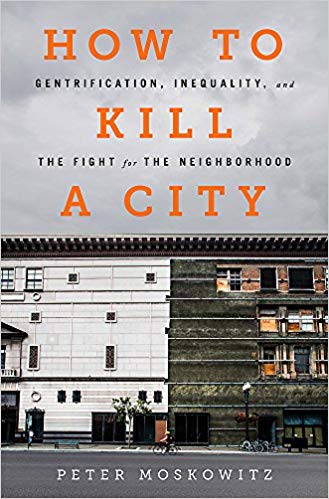
Speaking of looking at contextual specifics rather than simply dealing with overarching models, P. E. Moskowitz does an excellent job of examining how gentrification and the transformation of the city from a community to a locus of wealth-accumulation for the already wealthy plays out in four very different American cities—Detroit after bankruptcy, New Orleans after Katrina, New York after near bankruptcy (back in the day paving the way for everywhere else), and San Francisco, already wealthy but choosing to get ever-wealthier by catering to the Tech industry. By exploring these different contexts, Moskowitz does a very good job of showing what people are up against when they try to fight back and hold onto their homes and communities. Not all resistance is futile, but the picture is pretty bleak. Community advocates, mobilizers, and activists, engage in thankless exhausting work. But the Real Estate Developers have enough money that those working for them never get tired. They get very well paid. It’s an unbalanced fight and time is not on the side of the people.
That said, Moskowitz goes for the “human element” and engages in journalistic story-telling a bit more than I thought necessary—making much of the book a fairly quick/fluffy read—but that’s okay, I suppose. It probably makes it more inviting to a broader audience and, yeah, we need a broader audience engaging with this theme. Less tiny houses and more rent strikes, please.
4. Darkness Now Visible: Patriarchy’s Resurgence and Feminist Resistance by Carol Gilligan and David A. J. Richards.
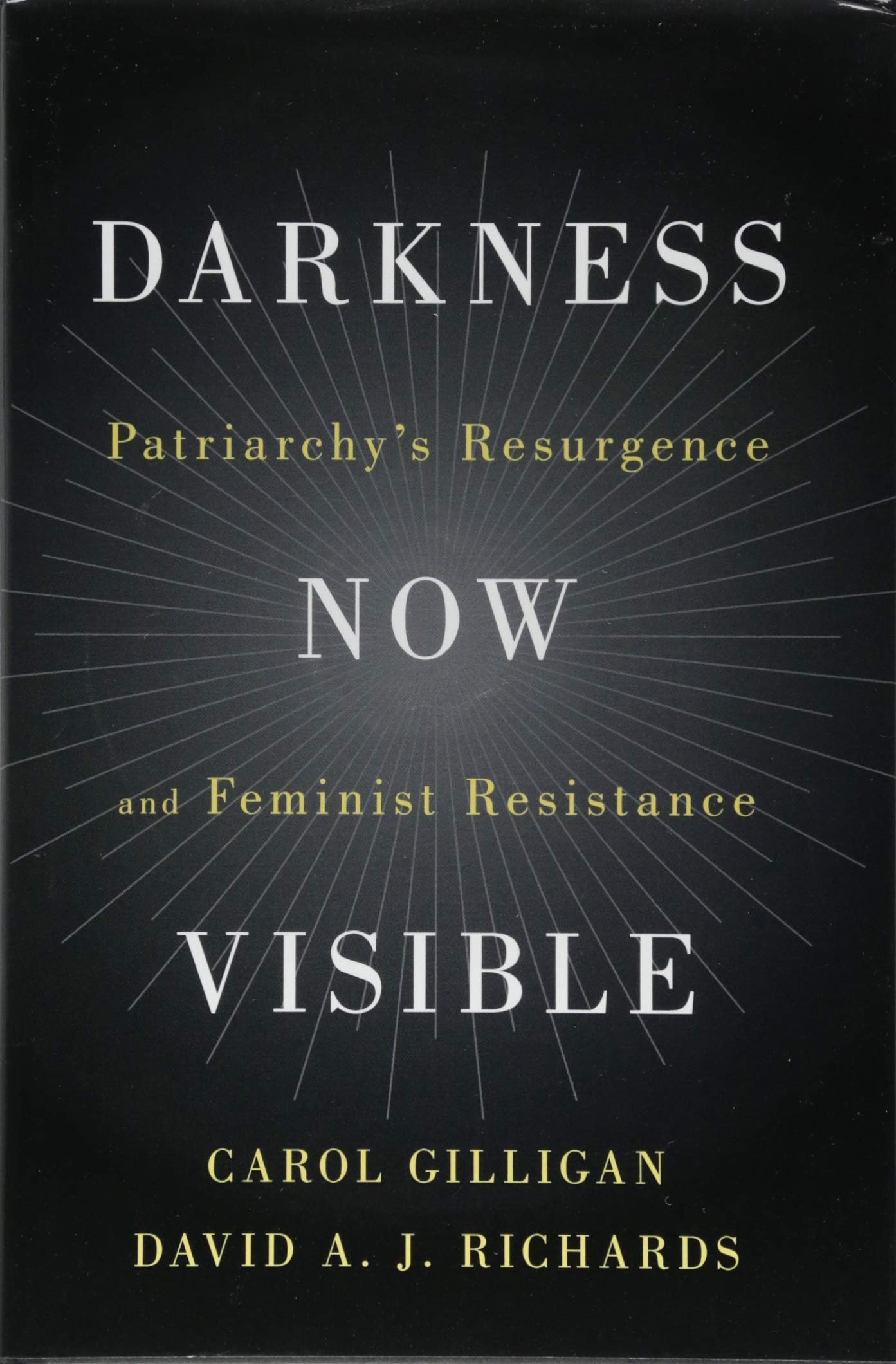
Why are we seeing a resurgence of toxic masculinity today, often paired with neo-fascist ideologies, ideals, and institutions, just at a time when some (notably, Michael Kimmel) had declared them a species doomed for imminent extinction? Carol Gilligan and David Richards examine this question together and argue that the increasing gap between the very few who are very wealth and the very many who are very poor, the increasing hierarchalization of societies around the world, and the increasing rapaciousness of the oppression that accompanies austerity capitalism, are supported by a renewed focus upon gender (a necessary linchpin of the whole edifice), reinforcing oppressive dynamics and subverting resistance or the possibility thereof. Especially after the rise of Trump, patriarchy is put forward as the lens through which we are encouraged to view all else (and Trump’s success is, in part, premised upon the successful way in which he did this). Because of this, Gilligan and Richards argue that feminism is the “key ethical movement of our age.” This is so not because intersectionality is unimportant and not because gender is more important than race or class but, rather, because patriarchy is the lens through which oppressors wants us to view the world and so, changing lenses, requires us to first embrace feminism. So, “Why feminism and why now?” “Because it is essential to free democracy from patriarchy, which in its current licentious incarnation is tinged with nihilism and edging towards fascism.”
The argument isn’t as well made as it could be—much of it is anecdotal based upon papers written by students in a course the authors taught together (or made in a literary critical manner through examining works by Melville and Hawthorne), and a good portion has been made better elsewhere (in bell hooks’s book about masculinity, for example)—but there is still quite a bit of good stuff here. However, there are times when Gilligan and Richards drift too-close-for-comfort to the kind of mainstream feminism so thoroughly and appropriately criticized by Hester Eisenstein (see my review of Feminism Seduced below). We see this especially in their praise of Hillary Clinton. To be honest, I’ve never understood the bougie, White feminist valourization of Clinton. She has caused irreparably harm to countless impoverished and racialized women not only in the USofA but also around the world. She has also been a trenchant and unapologetic ally to one of second most prominent sexually predatory President of the USofA. I think the only woman Hillary Clinton cares about is herself. And maybe her daughter. Maybe.
Anyway, my second major beef with Gilligan and Richards, which extends to a beef with Abigail Bray and maybe (but I’m not totally sure about this) also a beef with Hester Eisenstein is the way in which the seem to lose their ability for careful, incisive analysis when it comes to sex positive feminism. Gilligan, Richards, Bray and maybe (but maybe not?) Eisenstein are what are known as SWERFS—Sex Worker Exclusionary Radical Feminists (i.e., feminists who argue that sex work—although they don’t use that term, they prefer to use the terms “sexual exploitation,” “sexual violence, “and prostituted women and girls”—is ever always, and only violence against women who are forced to do what they do not want to do). This fits more with the bougie, White mainstream feminism that Gilligan and Richards tend to prefer but it’s more disappointing to find in Bray who is obviously hella smart writing this way (although, given the dark corners of the web she explores, it’s not a complete surprise to see her inclining in this direction). For a thorough deconstruction of the prohibitionist position, see here. Anyway, of all the books I’ve read about sex, gender, and misogyny of late, this one was probably the most fluffy. Good for those who want to tip there toes in the water, but not without its problems.
5. Why Does He Do That? Inside the Minds of Angry and Aggressive Men by Lundy Bancroft.
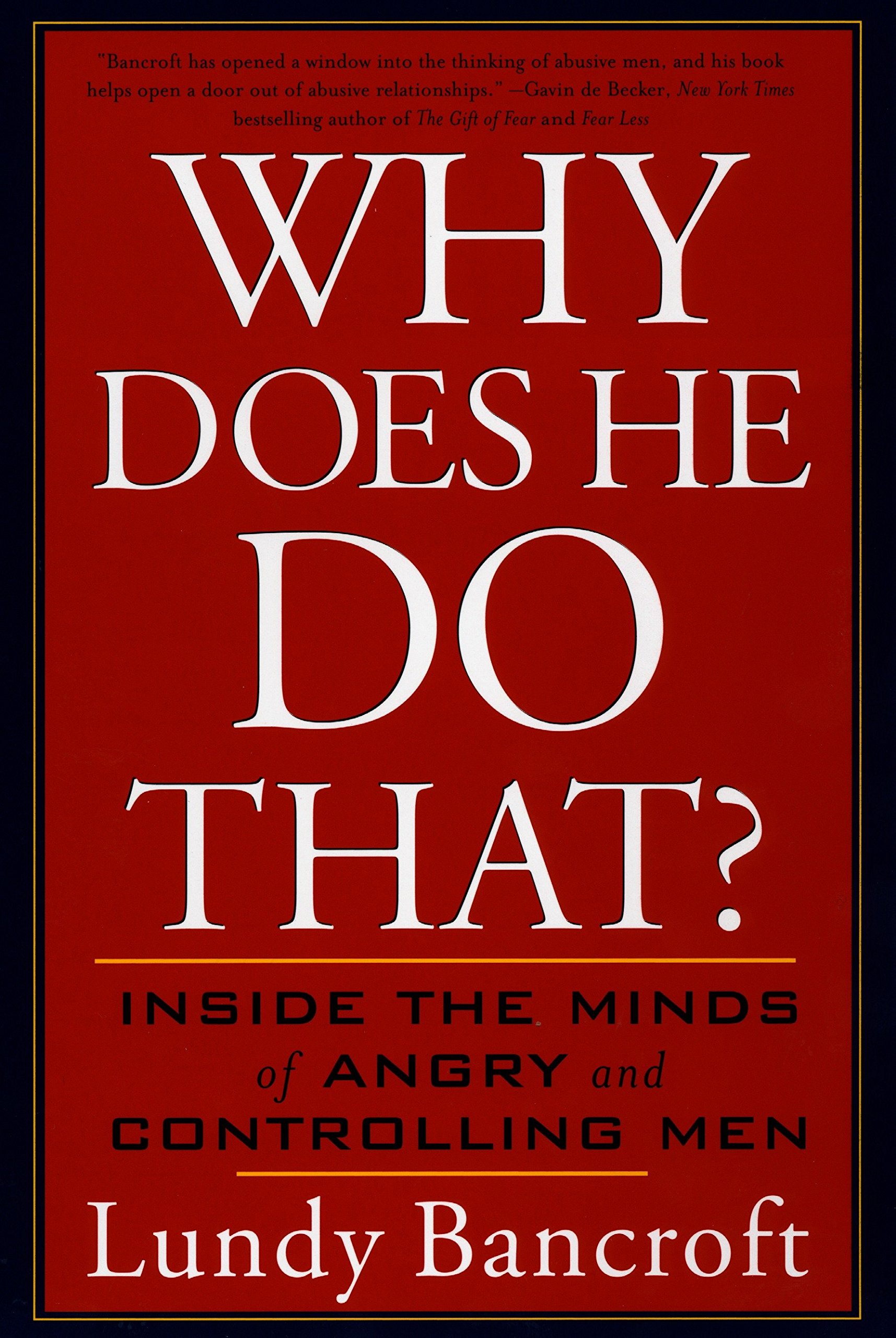
I don’t know much about Lundy Bancroft—he appears to have successfully carved out a corner for himself in the social service, self help, therapy publishing/lecture/workshop industry, accumulating both a very devoted following and some serious critics along the way—but I found Why Does He Do That? to be one of the very best books I have read about angry men and toxic masculinity (and I’ve been reading a fair bit about both of those things lately). Pretty much every page had me exclaiming, “Yes!” and putting stars in the margins. There is just so much here that makes sense of abusive men (with the focus being on men who engage in domestic violence) and so much here that, as N. O. Bonzo pointed out to me, overlaps with the psychoanalysis of men who are drawn to fascist, proto-fascist, or neo-fascist ideologies, groups, and practices (of the kind discussed in Theweleit’s Male Fantasies, which I reviewed last month). Given that I spent my childhood in the context of domestic violence, this was not always an easy book to read but it gave me considerable insight into my own experiences and experiences of loved ones (prompting me to write the letter to my mom that I posted earlier in July). Highly recommended reading.
6. Misogyny Re-Loaded by Abigail Bray.
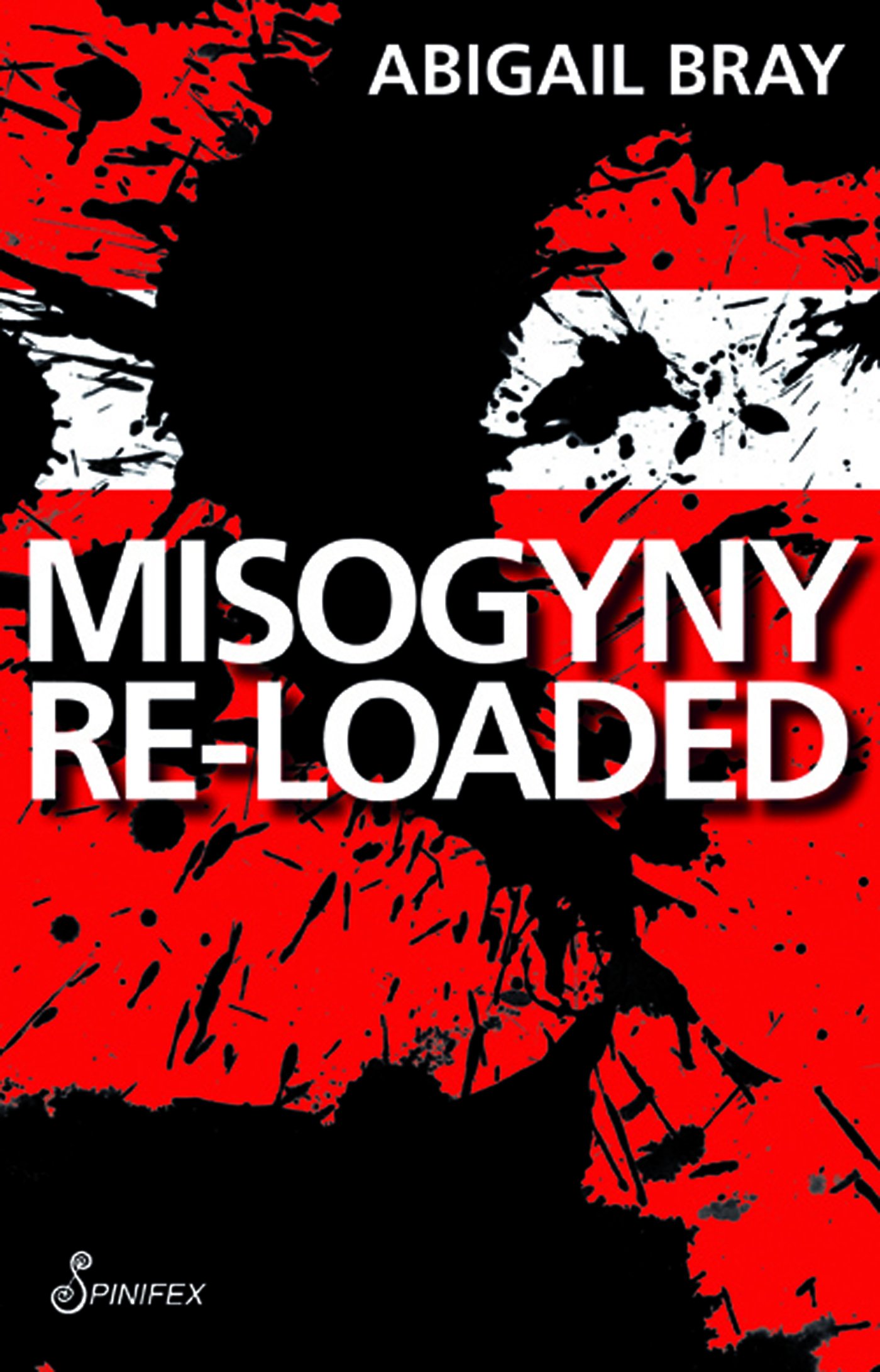
Abigail Bray has taken a deep dive into the world of angry and violent men—not just men who are court ordered to attend an anger management program (as per Bancroft’s focus), but men who post rape jokes, revenge porn, and brutal gore videos online. Men who celebrate all kinds of violence and the gorier, the more degrading, the more sexualized it is, the better. Bray argues that the public, mocking celebratory nature in which men share in these things together—the lulz, the smug, smarmy, impenetrable, zero-fucks-given vibe of this scene—means that we have entered into “a new era of misogynistic hate.” Here, we have misogyny celebrated as a virtue. The ruthless, sadistic sexual psychopath is praised as the new counter-cultural hero who shrugs his shoulders at outdated moralising and does what he wants. This is misogyny-cum-fascism. Importantly (especially when we keep in mind Kate Manne’s definition of misogyny as the policing wing of patriarchy, enforcing the gendered standards embraced by all of mainstream society), Bray argues that this kind of misogyny is not an exception but “a barely disavowed norm.” Hence, echoing the language of Achille Mbembe and Sayak Valencia, Bray asserts that “patriarchal capitalism” possesses a “necropolitical core” centred on “snuff pornography.” Disaster capitalism pairs with “shock and awe misogyny.”
In order for this to work, solidarity amongst women or other parties oppressed by cis-male domination, is especially policed and punished and women who are willing to fall in line with misogynistic norms are rewarded (for more on this, see the review below of Hester Eisenstein’s Feminism Seduced). Hence, if Germaine Greer demonstrated that women constantly underestimate how much men hate them, Bray argues that women have also underestimated to extent to which women are willing to hate (and betray) one another. To facilitate this, the psychiatric industry has been massively expanded to encourage women to focus on themselves and their own personal wellness, to view their symptoms as products of personal health issues, rather than products of systemic oppression and abuse, and to embrace faux compassion via pop spirituality that is forced on everyone as a form of highly conservative, “emotional fascism.” Here, the elevation to a higher, more enlightened state of consciousness is paired with learning to refuse feminist rage and embracing contentment under the regime of patriarchal capitalism. Here, Bray argues, we encounter a further development of the ageism that is endemic within patriarchy’s sexualization of girls: now, not only are women expected to have the physical bodies of young girls, they are also expected to have the emotional outlook of young girls. Bray writes:
The cultural imperative to be emotionally ‘fresh’ can be understood as the mass ‘re-virginisation’ of the female mind. The emotionally re-virginised girl-woman must hide grief and anger at oppression, pretending, as it were, that she has never been ‘fucked over’ by patriarchy, in order that she can sell herself as untouched by ‘previous sullying experiences’ with men.
Ultimately, Bray argues, the development of this new manifestation of misogyny is related to two things: neoliberal austerity (“austerity fascism”) which has a significantly more harmful effect on women, especially racialized and impoverished women around the globe, and the way in which war plays such a prominent role in the global economy and the imaginaries of imperial states like the USofA. Public funds are increasingly directed towards arm manufacturers, budgets related to caring for all members of the community are slashed, and the proliferation of rape jokes and snuff films paired with the expectation of adult women embracing girl power (while abandoning both feminism and other women) undercut the ability of the public to understand and resist this. Bray concludes:
Misogyny has been re-loaded by those who profit from death and the living death of extreme exploitation—the intensifying barbarism of misogyny is the cultural logic of the new global fascism … What is required is a fearless loving solidarity against every form of necropolitics, from the micropolitics of social violence, exclusion, exploitation, symbolic and actual violence against women to the macropolitics of industrialised mass murder.
7. Feminism Seduced: How Global Elites Use Women’s Labor and Ideas to Exploit the World by Hester Eisenstein.
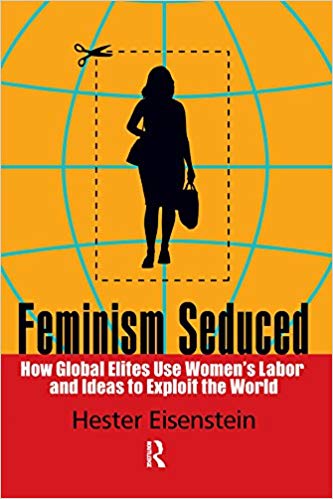
Hester Eisenstein shows us what it would be like to read Noam Chomsky if he had paid attention to gender dynamics. She knows her history, she knows her politics, she knows her social theory and counter-theory, and she knows this both as it relates to the context of occupied Turtle Island and the rest of the globe. She especially understands the development of capitalism, how it is increasingly basing profits upon the devastation of labour, and how this devastation of labour (especially the destruction of the “family wage” and the replacement of it with low paying, unbenefited, highly precarious, part-time work) is disproportionately death-dealing to women who have been impoverished, particularly in the two-thirds world. In other words, Eisenstein works equally within the analytical spaces of class, gender, and race. And the argument that she makes—that mainstream feminism (think Hilary Clinton as feminist icon) has, in fact, been co-opted by capitalism in order to advance the interests of capital (think of wars over oil being justified by arguments about saving veiled women from abusive brown men or of impoverished racialized women on Turtle Island being driven further into poverty by the welfare reforms and the focus on “getting women into the workplace” that occurred during the Clinton regime), even if this means that a select few women are able to be just as wealthy, powerful, untouchable, and rapacious as their male counterparts (again, Hilary Clinton but, also, Condoleezza Rice, and Jenette E. Ramos, a Senior Vice President at Boeing, the world’s largest arms manufacturer). This is top-notch, feminist analysis. Highly recommended.
8. Black Leopard Red Wolf by Marlon James.

I debated on if I wanted to read this book because, although A Brief History of Seven Killings was very well written, it was also very violent and I wasn’t sure if I was into James’s violence for violence’s sake. However, I bought into the hype, was curious to try reading a book in the fantasy genre from an acclaimed literary author, and also wanted to see how James develops this genre in a self-proclaimed “African” rather than Eurocentric manner (although, NB, James is from Jamaica and currently resides in the USofA). I wasn’t very impressed. Not at all. First of all, a number of African writers are developing this genre in much more interesting and creative ways (Okri, Coutu, and Makumbi all come to mind immediately although, granted, they aren’t writing traditional “fantasy” so much as “magical realism” informed by various African traditions, histories, and spiritualities). Second, this book was essentially an unending litany of sex and violence and sexual violence with no character development and plot points that felt as though they were thrown in after the fact to tie things together and to try and make the whole thing seem smarter than it is. As a work of literature, this book sucked. But if you watched Game of Thrones because you liked seeing dragons, rape scenes, and various forms of slaughter, then you might dig this.
9. Berlin Alexanderplatz by Alfred Döblin.

W. G. Sebald opened up a whole new world of high modern German literature to me and I’ve been slowly working through a number of authors based upon those he discusses in his essays. From Sebald I went to Robert Walser, and from Walser I went to Alfred Döblin. I was only delayed in this trajectory because one of my goals for my fiction reading this year was to spend a lot less time reading White cis-male authors from Europe or the States colonizing Turtle Island. Anyway, I mostly enjoyed this book although the lackadaisical approach it took to some things (notably, sexual violence and violence against women) was off-putting. I get that Döblin was going for the grittiness of the real world of those on the margins of society in Berlin in the interwar period but the whole thing does smell a wee bit classist and voyeuristic at times. But only at times. Still, I’m not sure if I could get through Fassbinder’s fourteen-hour long mini-series based on the book. I confess that I am tempted. That said, there is something about these high-modern Germans that I find fascinating. I think it has to do with their sentence structure, tone and flow, as well as the degree to which their narratives are disjointed and rambling-but-not. I’m undecided about who to read next—maybe Bernhard, maybe Andersch, maybe Richter, maybe von Kleist.
10. The Complete Short Stories of Marcel Proust by Marcel Proust.
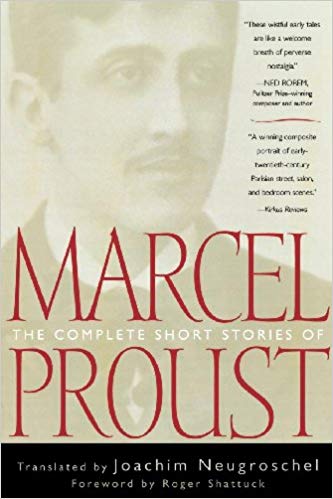
Proust is a good writer, a real master of his craft, and a lot of his mastery is evident in flashes and glimpses even when he was very young and so, while a lot of these short stories aren’t much in terms of stories, they certainly are something in terms of writing samples from a genius. I enjoyed reading them although I confess that part of my pleasure derived from the way that Proust feeds into my own snobbery . I mostly try to keep that to myself—but it secretly thrills me when I think, “okay, sure, you’re a member of the literati and have maybe even read all of In Search of Lost Time (as have I, as have I)… but have you also read Proust’s short stories? Oh, you’re not familiar with them? Well, you can borrow them from me sometime if you like.” Muahahahaha. I’m such a dork (because, shhh, don’t tell anyone but if they’ve also already read the short stories, I have an old hardcover collection of Proust’s letters as well).
11-12. something bright, then holes and The Latest Winter by Maggie Nelson.
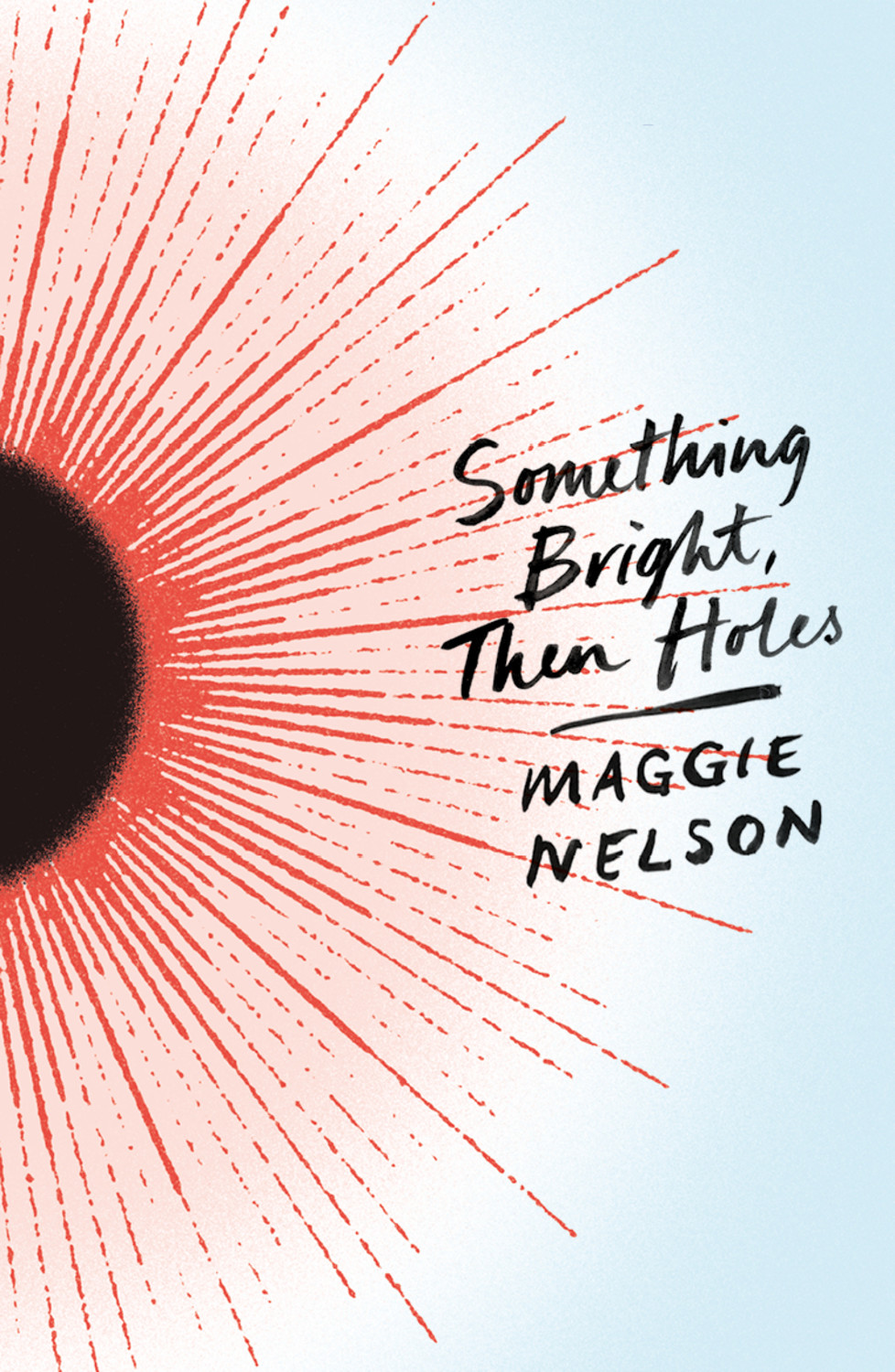
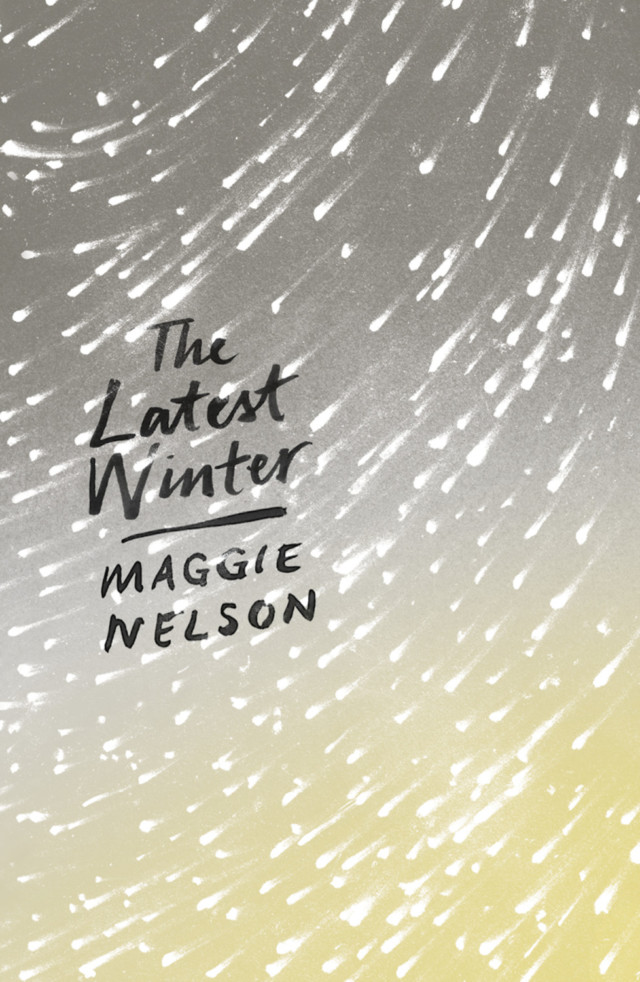
I’ve said this before but it bears mentioning again—once an author gets hot, puts out something that is a really mature masterpiece that wins some prestigious prizes and a lot of critical acclaim (take Maggie Nelson and her 2015 work of auto-theory, The Argonauts), then publishers love resurrecting older works by that author because they know they can probably make some money off the buzz around the author’s name, regardless of how the quality of the early work compares to that of later works. So, when I suddenly saw a couple new titles by Maggie Nelson, I checked the front matter and sure enough they were reprints of texts originally published around ten years ago. But, being enough of a Nelson fanboy to want to read everything I can by her, I decided to check two of them out because: (a) I was curious to read her poetry (as opposed to reading her always poetic prose); and (b) even if this writing was not at the level of The Argonauts, almost nothing is at that level and Nelson’s “crummier,” less mature stuff might well be better than most other people’s best work. So I went in with my expectations appropriately dampened and basically got what I was looking for. A few very good poems, a few not so good poems, and a lot of close-but-not-quite-didn’t-really-do-it-for-me poems. Fun for a groupie but if you’re looking for something that will really rock your socks, read The Argonauts already.
13. bad animals by Tom Cull.
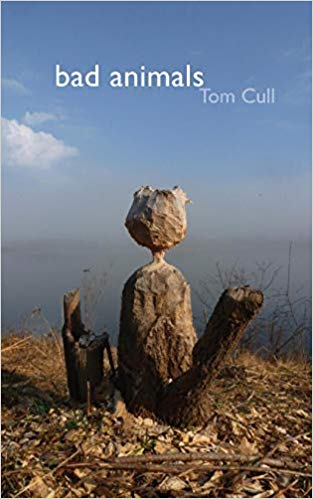
Reading books by people you actually know is always risky. Reading poetry books by people you actually know is even riskier. It’s bad enough to think someone’s academic treatise is dull or uninspired—thinking someone’s poetry is pretentious and overrated (or whatever), is even worse because poetry is such a deeply personal endeavour. So I was kind of anxious about reading Tom Cull’s collection. Thankfully, my anxiety was completely misplaced because these are extraordinarily well-crafted poems that perfectly balance thoughtfulness and moodiness, humour and despair, playfulness and desperation. Sometimes poets try very hard to be clever, and sometimes poets try very hard to make you feel all the feels, and somehow Tom is able to do both of these things without appearing to be trying. That’s a pretty great trick. Recommended reading.
14. Seeking Refuge: A Graphic Novel by Irene N. Watts.

Prior to reading Austerlitz by W. G. Sebald, I knew nothing about the Kindertransport—the evacuation of nearly 10,000 Jewish children from Germany, Austria, Czechoslovakia, Poland, and Danzig in the nine months prior to the outbreak of World War Two. These children were sent by train and then by boat to England where they were taken in by various families (or, in the case of orphans, sent to orphanages). Sebald talks about this in his gently-meandering-but-never-lost melancholic manner, but he never talks too much about the hardships that kids might have experienced when taken into different British families—families that might not always have had entirely noble reasons for accepting another child (perhaps they thought it would impress their socialite friends, perhaps they needed another body to work around the home, and so on). Irene Watts does a good job of bring this to the fore with the help of Shoemaker’s simple pencil sketches. Watts’s manner of story-telling is affective without being sentimental. To me, it demonstrates the kind of thing that graphic novels, as a genre, are so well suited to do. A good book.
Movies
1. The Beach Bum (2019) directed by Harmony Korine.
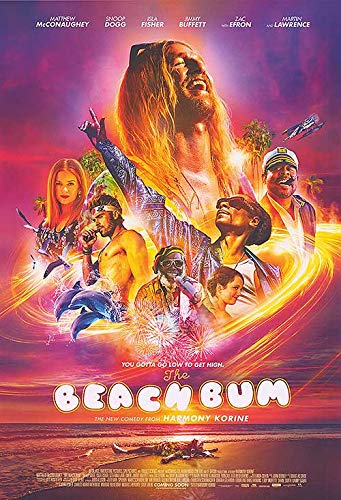
In Spring Breakers, Harmony Korine really came home to his aesthetic. As an artist, practicing a craft, you can see how he has matured and, in that film, produced a top-notch work of art that can stand shoulder-to-shoulder with the best movies being made in the territories occupied by the USofA today. However, Spring Breakers was not only pleasing from a technical, aesthetic, and affective perspective, it was also pleasing because it’s a brilliant exploration of morality, the relation of the Law to the pleasure principle, the complications of living in the late capitalist world where we are ordered to enjoy ourselves, and the outbursts of Jouissance that occur within subjected subjectivities. To me, what sets a truly outstanding film apart from a generally great film is this combination of factors—technical prowess, a unique aesthetic or gaze, and equally challenging, thoughtful, or creative content in terms of plot, story, character, theme, and so on. Spring Breakers was a film like that (I actually watched it a number of times and had copious notes for an essay I wanted to write about Law, Jouissance, and Rebellion in conversation with Lacan, Žižek, and Korine, but then I lost all my notes so that project got shelved). However, once a Director actually produces a work like this—a work that feels not only like a true masterpiece but also a work that feels like the culmination of their efforts to date—it’s often very hard to follow up on. Terrance Malick’s striving towards, and then production of, The Tree of Life is a good example of this. Ditto, also, for P. T Anderson (although he climaxed earlier with Magnolia and nearly came back with There Will Be Blood). Everything they have done since their climax has felt increasingly derivative of, well, themselves. What often happens, as far as I can tell, is that a Director, having now mastered the technical, aesthetic, and affective portion of their craft can then turn their gaze to any other subject matter and reproduce those things but the narrative, character, plot, story and thematic elements are lacking and so what we end up with are very good movies (movies that are significantly better than pretty much everything playing in theatres) but not the films that truly made those Directors great.
I think this is where Korine lands with The Beach Bum. It’s hard to know if he’s coasting, just having lots of fun, or has truly climaxed as an artist and we’ve now seen the best he has to offer. The jury is out. Regardless, The Beach Bum was a lot of fun.
2. Under the Silver Lake (2018) directed by David Robert Mitchell.

It Follows was an indie suspense, horror film that lived up to its hype. It scared the bejesus out of me. So when I saw David Robert Mitchell’s subsequent film, Under the Silver Lake, getting a fair bit of critical praise, I got pretty excited about it. I watched it over a week ago, and I’m still figuring out how I think and feel about it. It struck me as something of an homage to Mulholland Drive or The Lost Highway, but it was simultaneously more campy and more complicated than Lynch’s work. If Lynch ties you up with many complicated and beautiful knots, then Mitchell leaves you with a ball of yarn that was handed over to a room full of cats who were given no other means of entertaining themselves for a week or two. Under the Silver Lake has layers and layers of codes and clues that leave the protagonist figuring one thing out while the viewers are left with a family-sized laundry basked full of mysteries to solve. If you incline to obsession or paranoia, this film is for you.
So, yeah, it’s easy to get lost in the mess of the film and play the game of “who can come up with the thinkiest, most comprehensive, shocking but totally compelling once you see it” reading of the movie, but there were other elements present that make me not super inclined to play along. Specifically, I don’t like the way Mitchell gazes at women. I find it super off-putting. The flag about this was already there at the beginning of It Follows (but, thankfully, Mitchell didn’t indulge himself too much after that). And, okay, I get that for much of Mitchell’s focus on the tits and ass of every single female who appears in this film, what he’s actually doing is showing us that the protagonist is the one focused on the tits and ass of every single female he encounters but: (a) this is not always the case (the very opening scene being a good example of this); and (b) making this observation does not get Mitchell off the hook. Trying to convince me that it’s just fine to reduce all women everywhere to D-cups, cleavage, butt lifts, and thongs, because the real point is the insight this gives us into the protagonist is kind of like trying to convince me to laugh at rape jokes because the real point of the jokes is to be funny. I’m not buying it. It’s really too bad because there were some truly fun and creative elements to this movie and there is no denying that Mitchell has got some talent. It’s just that he seems to want to use that talent to create the kind of movies he wanted to watch when he was a thirteen year old boy.
Documentaries
1. If I Had Four Camels (1966) directed by Chris Marker.

A series of black and white still photographs from around the world are presented on screen while the photographer and two of his friends discuss whatever thoughts the pictures prompt. Not as boring as it sounds! Especially because, as the photos progress from city to city and country to country, one gets a sense for the world that once was but is no more—a world where distinct locations truly were distinct locations, instead of the world of the neoliberal city where everywhere has been bleached, branded, and mass marketed to look like everywhere else.
2. The Wonderful Horrible Life of Leni Riefenstahl (1993) directed by Ray Müller.
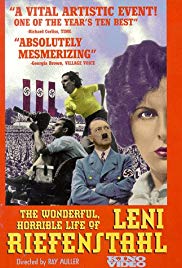
Leni Riefenstahl is known as the Nazi Propaganda Filmmaker Extraordinaire with her two most widely known films—Triumph of the Will and Olympia—being innovative, technically-brilliant, and trend-setting masterpieces of documentary cinema. I have seen Triumph of the Will (but only clips of Olympia) and there is no denying her ability to capture the mood of what she witnessed and to present that mood in a way that is seductive and contagious. But I knew nothing else about her so when I saw that there was a biopic made about her in 1993 (shortly before she turned 90—because apparently she was still alive and not only came out of WWII unscathed but also quite wealthy), I became curious to learn more.
However, there is something very important that you need to know that this documentary doesn’t tell you (and that I didn’t find out until after I watched it)—Riefenstahl actually commissioned it! And eighteen Directors turned down her request to make it before Müller finally took the bait. The final product, all three hours of it, is two hours longer than it is supposed to be but Müller claimed that this was necessary in order to offer a “balanced” presentation of Riefenstahl and in order to neither entirely villainize her nor allow her to present herself unchallenged, as she wished to be seen. I admit that watching the dance between Riefenstahl and Müller, the contestation over presentation (from the big picture to the minute details involved in staging individual shots) was completely fascinating. And Riefenstahl does raise some excellent questions about how we understand Art and Politics and Art and Responsibility and to whom all Artists are required to be Accountable and so on and so forth, but the problem is that she is not raising these questions from a place where she is not heavily (desperately, necessarily) invested in certain answers. She is raising these questions while also very clearly lying and denying other things about herself.
But here’s the thing: Riefenstahl doesn’t need you to think she was completely innocent, morally upright, or whatever. All she needs is for you to think, “shit, I guess her situation was a lot more complicated than I first thought.” All she needs is for you to decided, “hmmm, maybe I should withhold judgement,” and she wins. In fact, she has already won from the beginning when Müller decided to present a “balanced account” of her life and legacy. Riefenstahl is no dummy. She’s a survivor with all kinds of smarts and skills. She has a very strong will and a proven ability to get what she desires. And I suspect that she does get whta she wants with this film. It is, in other words, one last great Nazi propaganda piece and, because of the subtle way Riefenstahl is able to accomplish this, it’s recommended viewing. Watch and learn—learn from Müller’s mistake. No platform for Nazis.